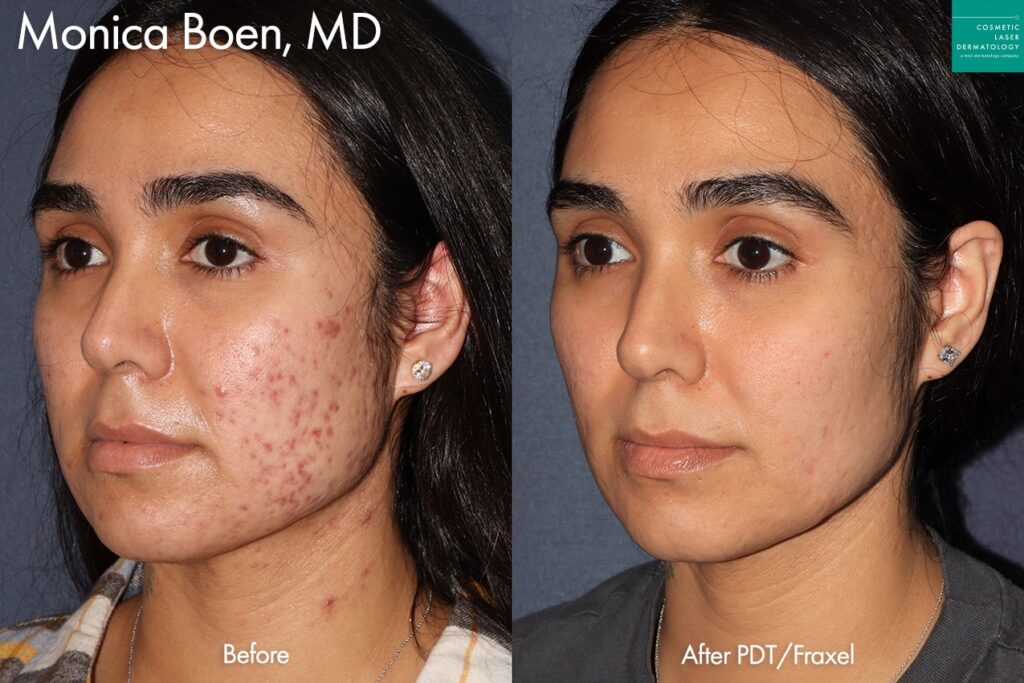Checking Out Skin Problems: Determining and Treating Acne Scars for Healthier Skin
Acne scars represent a significant concern for individuals looking for to preserve healthy and balanced skin, as they can impact both appearance and self-esteem. Comprehending the different kinds of marks, from atrophic to hypertrophic, is vital for identifying ideal therapy options.
Recognizing Acne Marks
Recognizing acne marks is essential for any individual who has experienced extreme acne, as these marks can have an enduring influence on both physical look and psychological health. When the skin undertakes inflammatory responses during active acne sores, acne marks form. The seriousness of scarring is usually affected by elements such as the sort of acne, its period, and specific skin characteristics.
The body's all-natural healing procedure can result in either atrophic scars, which look like anxieties in the skin, or hypertrophic marks, which are elevated and arise from overproduction of collagen. Furthermore, the psychological toll of acne scars need to not be taken too lightly; many people report sensations of humiliation, anxiety, and lowered self-worth. This psychological concern can affect social interactions and general lifestyle.
Resolving acne scars needs an extensive understanding of their formation and impact. Recognition of the capacity for long-lasting effects connected with untreated marks can inspire people to seek suitable treatments. Early treatment and efficient monitoring strategies can considerably boost skin appearance and boost psychological strength, highlighting the significance of comprehending the complexities surrounding acne scars.
Kinds Of Acne Marks
Acne marks can be categorized into distinctive types, each showing one-of-a-kind attributes and calling for particular therapy strategies. The key types of acne marks consist of atrophic, hypertrophic, and keloid scars.

Hypertrophic marks, on the other hand, are increased over the skin degree and are the outcome of excessive collagen production throughout the recovery process. They usually remain within the borders of the original acne lesion. Keloid scars are comparable yet prolong beyond the initial injury site, creating larger, increased areas that can be painful or scratchy.
Understanding these kinds of marks is essential for choosing proper treatment alternatives. Different marks may react much better to particular treatments, such as laser therapies, fillers, or surgical treatments, highlighting the importance of a tailored technique to acne scar management.
Identifying Your Marks
When reviewing the appearance of your skin, it is essential to precisely identify the sort of marks present, as this will certainly inform one of the most effective treatment technique. Acne marks normally fall under two categories: atrophic and hypertrophic scars. Atrophic marks, which are the most common, appear as clinical depressions or indentations on the skin. These can additionally be identified into ice-pick marks, boxcar scars, and rolling scars, each displaying unique qualities and needing different methods for evaluation.
Hypertrophic marks, on the other hand, are raised and take place due to excessive collagen manufacturing during the recovery process. Identifying the details attributes of your marks-- such as width, appearance, and deepness-- is crucial for appropriate recognition. Furthermore, consider the distribution of marks across your skin, as this can show the intensity and duration of the acne problem.
Involving with a skin specialist can offer useful understandings into the nature of your marks, aiding in the differentiation between different kinds. A detailed understanding of your scars will ultimately bring about an extra tailored and efficient treatment plan, guaranteeing a clearer and much healthier complexion.
Treatment Choices Offered
Recognizing the particular type of acne scars existing on your skin prepares for discovering reliable treatment alternatives. Usual kinds of acne marks include atrophic (clinically depressed), hypertrophic (increased), and post-inflammatory erythema.
For atrophic marks, choices such as chemical peels, microneedling, and laser resurfacing are widely used. Chemical peels use acids to remove the outer layer of skin, advertising brand-new cell development.
Hypertrophic marks can be treated with corticosteroid injections to squash the mark or laser therapy to reduce redness and enhance appearance. acne scars treatment. Silicone i loved this gel sheets and pressure dressings might additionally assist in handling increased marks
Additionally, facial fillers can briefly complete clinical depressions from atrophic scars, while medical excision may be proper for severe cases. Each therapy choice has its advantages and considerations, making it important to consult with a skin specialist. They can offer tailored referrals based upon the kind and extent of your scars, as well as your skin kind and total health and wellness.
Tips for Avoidance
Reliable prevention techniques can substantially decrease the likelihood of creating acne scars. The very first step is to maintain a regular skin care regimen that includes gentle cleansing, exfoliation, and hydrating. Utilizing non-comedogenic items helps avoid clogged up pores, which can worsen acne. Additionally, integrating topical treatments including salicylic acid or benzoyl peroxide can properly take care of breakouts and minimize inflammation.
Avoiding need to pop find more info or choose acne lesions is crucial, as this can bring about deeper skin damage and raise the risk of scarring. Instead, think about read this post here making use of a cool compress or non-prescription treatments to decrease swelling and redness.
Sun security is an additional important facet of avoidance; ultraviolet (UV) rays can darken marks and impede the healing process. Using a broad-spectrum sun block with at the very least SPF 30 daily can secure the skin and promote also recovery.
Last but not least, preserving a well balanced diet plan abundant in vitamins, antioxidants, and minerals supports skin wellness and recovery. Remaining hydrated and managing tension levels can likewise play a significant role in lowering acne flare-ups. By carrying out these techniques, individuals can substantially lessen their chances of establishing acne marks.

Conclusion
In conclusion, understanding and determining acne scars is vital for efficient therapy and attaining healthier skin. Numerous kinds of acne scars, including hypertrophic and atrophic scars, require particular treatments customized to private needs.
The body's natural healing procedure can result in either atrophic scars, which show up as anxieties in the skin, or hypertrophic marks, which are elevated and result from overflow of collagen. They are additional divided right into three subtypes: ice choice marks, boxcar scars, and rolling marks. Acne marks generally fall into two groups: hypertrophic and atrophic marks. These can additionally be classified into ice-pick scars, boxcar scars, and rolling scars, each exhibiting distinct features and needing various strategies for analysis.
Various kinds of acne marks, including hypertrophic and atrophic scars, require certain treatments customized to individual needs.